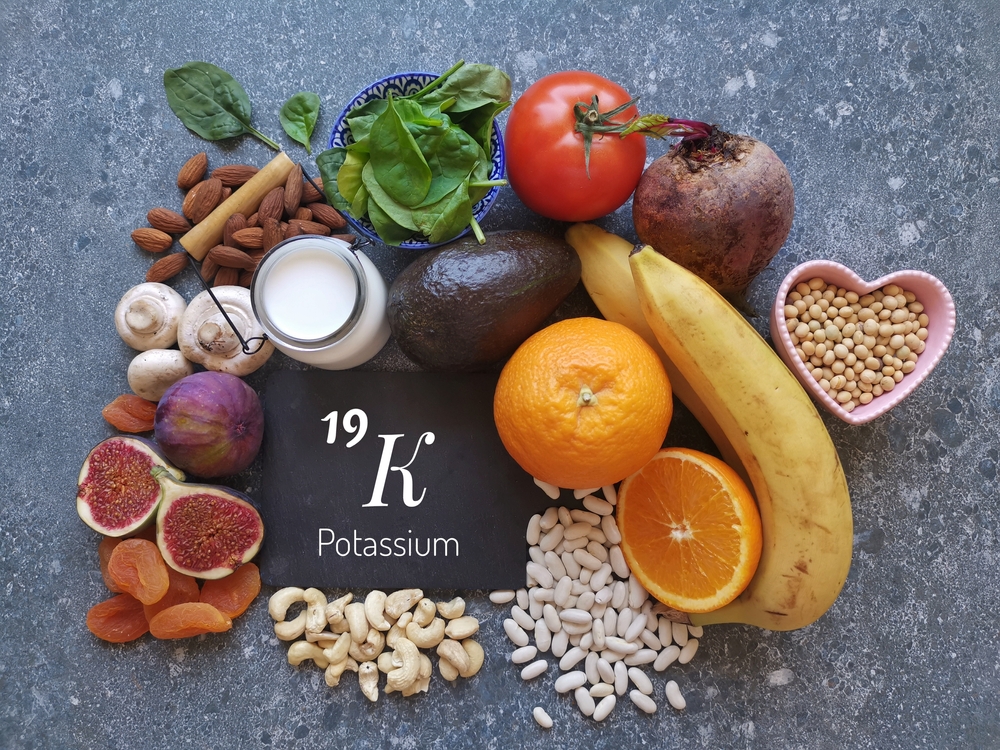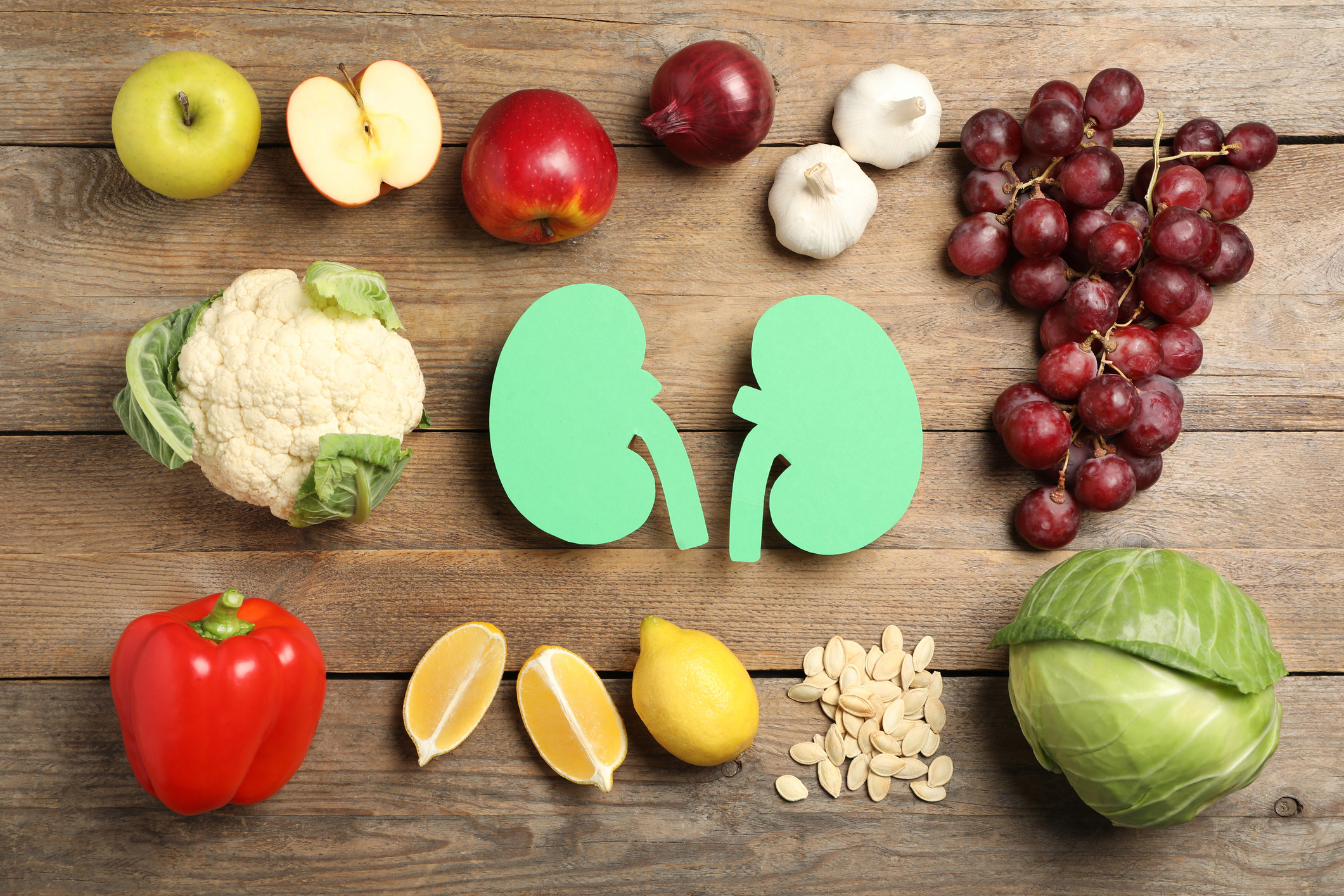Understanding the importance of a low potassium diet
In our fast-paced world, maintaining optimal health can be a daunting task. However, one crucial aspect that often gets overlooked is the role of potassium in our diet. While potassium is an essential mineral for various bodily functions, an excess of it can lead to severe complications, particularly for individuals with certain medical conditions. This is where a low potassium diet comes into play, offering a viable solution for those seeking to manage their potassium levels and improve their overall well-being.
Potassium is a mineral that plays a vital role in regulating fluid balance, muscle contractions, and nerve function. However, for individuals with kidney disease or other conditions that affect potassium excretion, high levels of potassium in the bloodstream can be life-threatening. By adhering to a low potassium diet, individuals can effectively manage their potassium intake and prevent potential health risks associated with elevated potassium levels.
In this comprehensive guide, we will delve into the intricacies of a low potassium diet, exploring its definition, the foods to include and avoid, the benefits it offers, and practical tips to successfully incorporate it into your lifestyle. Whether you’re managing a medical condition or simply seeking to optimize your dietary choices, this guide will provide you with the knowledge and tools necessary to embark on a journey towards better health.
What is a low potassium diet?
A low potassium diet, also known as a potassium-restricted diet, is a dietary approach that limits the consumption of foods high in potassium. This dietary regimen is often recommended for individuals with kidney disease, as their impaired kidney function can lead to a buildup of potassium in the bloodstream, a condition known as hyperkalemia.
The goal of a low potassium diet is to maintain potassium levels within a safe range, typically between 3.5 and 5.5 milliequivalents per liter (mEq/L) of blood. By carefully monitoring and controlling potassium intake, individuals can effectively manage their condition and reduce the risk of potentially life-threatening complications.
It’s important to note that while a low potassium diet is primarily recommended for those with kidney disease, it may also benefit individuals with other medical conditions that affect potassium regulation, such as certain heart conditions or those taking specific medications that can impact potassium levels.
Foods to avoid on a low potassium diet
To effectively follow a low potassium diet, it is crucial to be aware of the foods that are high in potassium and should be limited or avoided. Here are some common high-potassium foods to be mindful of:
- Fruits:
- Bananas
- Oranges
- Kiwis
- Mangoes
- Dried fruits (raisins, prunes, apricots)
- Vegetables:
- Potatoes (all varieties, including sweet potatoes)
- Tomatoes and tomato-based products
- Spinach
- Beets
- Avocados
- Dairy products:
- Milk
- Yogurt
- Cheese (particularly aged cheeses)
- Nuts and seeds:
- Almonds
- Peanuts
- Pistachios
- Sunflower seeds
- Pumpkin seeds
- Legumes:
- Beans (kidney, lima, lentils, etc.)
- Peas
- Processed and canned foods:
- Certain canned vegetables and fruits
- Salted snacks
- Processed meats (sausages, deli meats)
It’s important to note that while these foods should be limited or avoided, they can still be consumed in moderation, depending on your individual potassium requirements and medical condition.
Foods to include in a low potassium diet
While a low potassium diet may seem restrictive, there are still plenty of delicious and nutritious options to enjoy. Here are some low-potassium foods to incorporate into your diet:
- Fruits:
- Apples
- Berries (strawberries, blueberries, raspberries)
- Grapes
- Pineapple
- Watermelon
- Vegetables:
- Cauliflower
- Broccoli
- Green beans
- Lettuce
- Cucumbers
- Grains:
- Rice (white or brown)
- Pasta
- Bread (white or whole wheat)
- Cereals (unsalted)
- Proteins:
- Eggs
- Chicken
- Fish
- Lean cuts of beef or pork
- Dairy products (in moderation):
- Low-fat or non-fat milk
- Cottage cheese
- Ricotta cheese
- Fats and oils:
- Olive oil
- Canola oil
- Butter (in moderation)
Remember, it’s essential to read food labels carefully and consult with a healthcare professional or registered dietitian to understand your specific potassium needs and dietary recommendations.
Benefits of following a low potassium diet for kidney disease
For individuals with kidney disease, adhering to a low potassium diet offers numerous benefits that can significantly improve their overall health and quality of life. Here are some of the key advantages:
- Reduced risk of hyperkalemia: By limiting potassium intake, individuals can effectively manage their potassium levels and prevent the potentially life-threatening condition of hyperkalemia, which can lead to irregular heartbeats, muscle weakness, and even cardiac arrest.
- Improved kidney function: A low potassium diet can help alleviate the workload on the kidneys, allowing them to function more efficiently and potentially slowing the progression of kidney disease.
- Better management of fluid balance: Individuals with kidney disease often experience fluid retention, which can lead to swelling and other complications. A low potassium diet, combined with appropriate fluid intake, can help maintain proper fluid balance.
- Reduced risk of cardiovascular complications: High potassium levels have been linked to an increased risk of cardiovascular issues, such as irregular heartbeats (arrhythmias) and heart attacks. By following a low potassium diet, individuals can help mitigate these risks.
- Improved overall well-being: By managing potassium levels and reducing the strain on the kidneys, individuals may experience improved energy levels, reduced fatigue, and an overall enhanced quality of life.
It’s important to note that while a low potassium diet can offer significant benefits for those with kidney disease, it should be implemented under the guidance of a healthcare professional or registered dietitian to ensure proper nutrient intake and monitoring.
Tips for successfully following a low potassium diet
Transitioning to a low potassium diet can be challenging, but with the right strategies and mindset, it can become a sustainable and rewarding lifestyle change. Here are some practical tips to help you successfully follow a low potassium diet:
- Read food labels carefully: Become an expert at reading nutrition labels and understanding the potassium content in various foods. Look for low-potassium alternatives and be mindful of portion sizes.
- Meal planning and preparation: Plan your meals in advance and prepare low-potassium options at home. This will give you better control over the ingredients and potassium content of your meals.
- Leach and double-boil high-potassium foods: Certain high-potassium foods, such as potatoes and vegetables, can be leached or double-boiled to reduce their potassium content. Consult with a dietitian for proper techniques.
- Stay hydrated: Drinking plenty of water and fluids can help flush out excess potassium from your body. However, it’s essential to consult with your healthcare provider about appropriate fluid intake recommendations.
- Explore low-potassium recipes: There are numerous online resources and cookbooks dedicated to low-potassium recipes. Experiment with new flavors and ingredients to keep your meals interesting and satisfying.
- Seek support: Joining a support group or connecting with others following a low potassium diet can provide valuable insights, encouragement, and a sense of community.
- Monitor your potassium levels: Regularly monitor your potassium levels through blood tests to ensure you are staying within the recommended range and make adjustments to your diet as needed.
Remember, consistency and patience are key when following a low potassium diet. It may take time to adapt to the new dietary changes, but with perseverance and the right guidance, you can successfully manage your potassium levels and improve your overall health.
Meal planning on a low potassium diet
Meal planning is a crucial component of successfully following a low potassium diet. By taking the time to plan and prepare meals in advance, you can ensure that you have a variety of delicious and nutritious options readily available, reducing the temptation to reach for high-potassium foods. Here are some tips for effective meal planning on a low potassium diet:
- Create a weekly meal plan: Take some time at the beginning of each week to plan out your meals and snacks. This will help you stay organized and ensure that you have all the necessary ingredients on hand.
- Incorporate a variety of low-potassium foods: Mix and match different fruits, vegetables, grains, and protein sources to create well-rounded and satisfying meals. This will help prevent boredom and ensure that you’re getting a diverse range of nutrients.
- Batch cook and meal prep: Prepare larger portions of low-potassium dishes and divide them into individual servings for easy reheating throughout the week. This can save time and ensure that you always have a healthy meal option available.
- Utilize low-potassium recipes: Explore cookbooks, websites, and online communities dedicated to low-potassium recipes. These resources can provide inspiration and introduce you to new and exciting flavors.
- Plan for snacks and beverages: Don’t forget to include low-potassium snacks and beverages in your meal planning. This will help prevent cravings and ensure that you stay on track with your diet.
- Consider portion sizes: Be mindful of portion sizes, especially for foods that are moderately high in potassium. Consult with a registered dietitian or your healthcare provider for guidance on appropriate serving sizes.
- Involve family and friends: If you have family members or friends who are also following a low potassium diet, consider meal planning and cooking together. This can provide support, encouragement, and make the process more enjoyable.
Remember, meal planning takes time and effort, but it can significantly contribute to the success of your low potassium diet and overall health. By being proactive and organized, you can ensure that you have a variety of delicious and nutritious options at your fingertips.
Low potassium diet and other medical conditions
While a low potassium diet is primarily recommended for individuals with kidney disease, it may also benefit those with other medical conditions that affect potassium regulation. Here are some examples:
- Heart conditions: Certain heart conditions, such as congestive heart failure or arrhythmias, may require potassium monitoring and management. A low potassium diet can help maintain appropriate potassium levels and reduce the risk of complications.
- Diabetes: Individuals with diabetes, particularly those with diabetic kidney disease, may need to follow a low potassium diet to manage their potassium levels and prevent further kidney damage.
- Hypertension (high blood pressure): Some medications used to treat hypertension, such as certain diuretics or angiotensin-converting enzyme (ACE) inhibitors, can cause potassium imbalances. A low potassium diet may be recommended in conjunction with these medications.
- Liver disease: Individuals with liver disease may experience impaired potassium excretion, leading to hyperkalemia. A low potassium diet can help manage potassium levels and reduce the strain on the liver.
- Adrenal gland disorders: Conditions that affect the adrenal glands, such as Addison’s disease or congenital adrenal hyperplasia, can impact potassium regulation. A low potassium diet may be recommended to maintain appropriate potassium levels.
It’s important to note that while a low potassium diet may be beneficial for these conditions, it should only be implemented under the guidance of a healthcare professional. They will be able to assess your specific needs, monitor your potassium levels, and make appropriate dietary recommendations based on your medical history and overall health status.
Low potassium diet resources and support
Embarking on a low potassium diet can be a challenging journey, but you don’t have to go through it alone. There are numerous resources and support systems available to help you navigate this dietary change and ensure your success. Here are some valuable resources to consider:
- Healthcare professionals: Your primary care physician, nephrologist (kidney specialist), or registered dietitian can provide personalized guidance, monitor your potassium levels, and adjust your diet as needed. Don’t hesitate to ask questions and seek their expertise throughout your journey.
- Support groups: Joining a support group for individuals following a low potassium diet can be incredibly beneficial. These groups offer a sense of community, allow you to share experiences and tips, and provide emotional support during challenging times.
- Online communities and forums: Various online communities and forums dedicated to low potassium diets exist, where you can connect with others on a similar journey, ask questions, and share recipes and strategies.
- Cookbooks and recipe websites: There are numerous cookbooks and recipe websites specifically tailored to low potassium diets. These resources can provide inspiration, introduce you to new flavors, and offer practical tips for meal planning and preparation.
- Nutritional tracking apps: Various mobile apps and online tools can help you track your potassium intake, monitor your progress, and ensure that you’re meeting your dietary goals.
- Educational materials: Many healthcare organizations, kidney foundations, and government agencies offer educational materials, such as brochures, pamphlets, and online resources, that provide valuable information about low potassium diets and managing kidney health.
Remember, seeking support and utilizing available resources can make a significant difference in your journey towards successfully following a low potassium diet. Don’t hesitate to reach out and take advantage of the wealth of information and guidance available to you.
Conclusion and the importance of consulting a healthcare professional
Following a low potassium diet can be a life-changing decision for individuals with kidney disease or other medical conditions that require potassium regulation. By carefully managing your potassium intake, you can reduce the risk of potentially life-threatening complications and improve your overall health and well-being.
Throughout this comprehensive guide, we have explored the definition of a low potassium diet, the foods to include and avoid, the benefits it offers, practical tips for successful implementation, meal planning strategies, and the potential applications for other medical conditions.
However, it’s crucial to understand that while this guide provides valuable information, it should not be considered a substitute for professional medical advice. Every individual’s dietary needs and medical conditions are unique, and consulting with a healthcare professional, such as a nephrologist or registered dietitian, is essential.
These experts can assess your specific situation, monitor your potassium levels, and provide personalized guidance tailored to your specific needs. They can also help you navigate potential challenges, adjust your diet as needed, and ensure that you’re meeting all your nutritional requirements while following a low potassium diet.
In addition to consulting healthcare professionals, it’s important to seek support from various resources, such as support groups, online communities, and educational materials. These resources can provide invaluable insights, encouragement, and a sense of community during your journey.
Remember, a low potassium diet is not a one-size-fits-all approach. It requires patience, dedication, and a willingness to make sustainable lifestyle changes. By working closely with your healthcare team and utilizing available resources, you can successfully navigate this dietary transition and experience the numerous benefits it offers for your overall health and well-being.
If you or a loved one is in need of expert guidance and support in managing a low potassium diet, consider scheduling a consultation with the experienced kidney specialists at Kidney Specialists of Southern Nevada. Our team of dedicated professionals is committed to providing personalized care and comprehensive treatment plans tailored to your unique needs.


